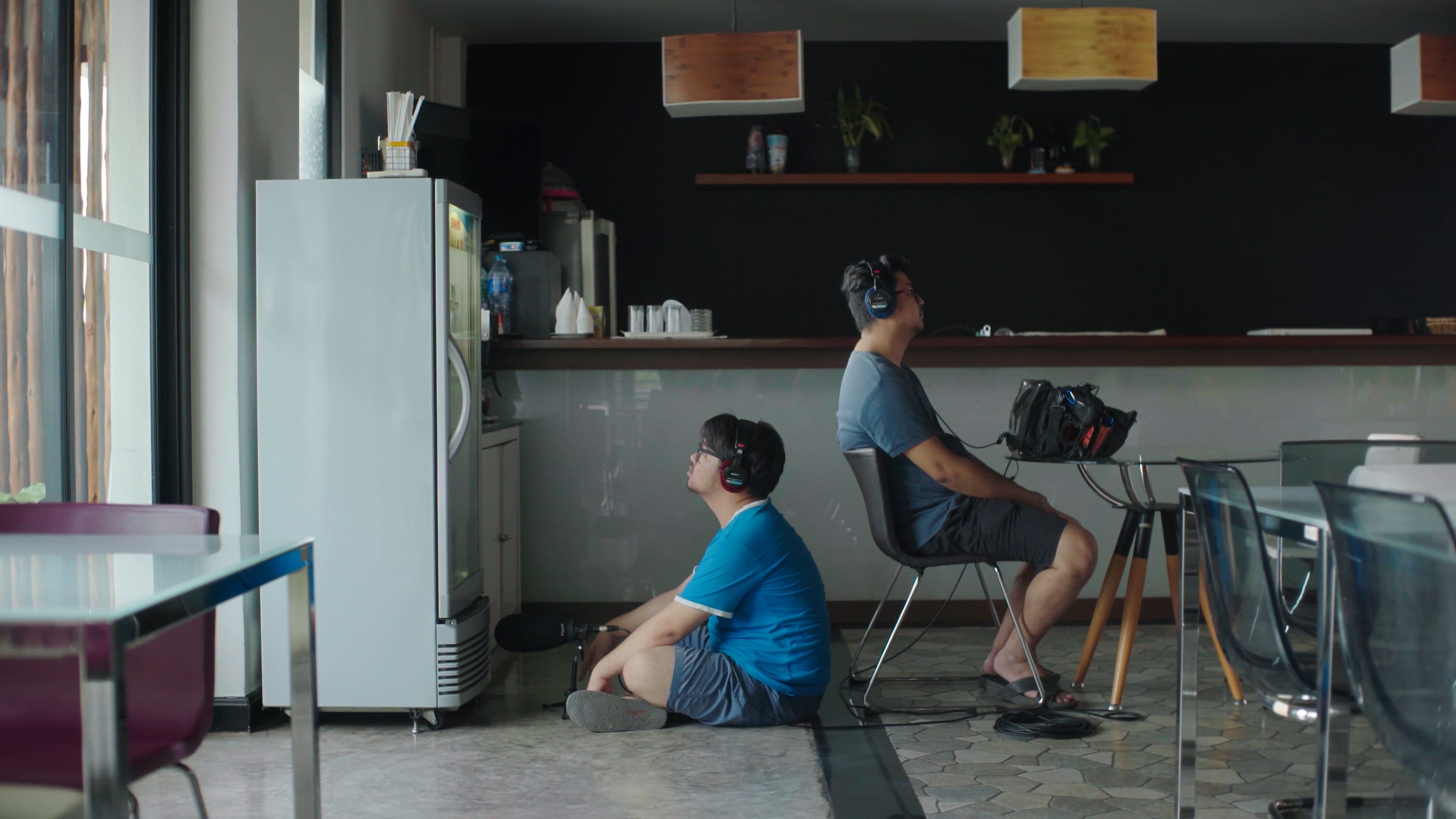RELATED ARTICLE
In the Shadow of the Dictator: A Conversation with George Sikharulidze
Mysterious Impressions: Connor Jessup on Apichatpong Weerasethakul
The Criterion Collection

Thai filmmaker Sorayos Prapapan’s Death of the Sound Man begins with a black screen accompanied by the mysterious but unmistakably sexual sound of someone slurping. Shortly after, the first shot reveals a young man in a sound booth fellating a small toy phallus. With this risqué opening, you might expect a collection of puerile adolescent jokes, but there’s much more to the film than that: what follows is a clever and politically irreverent exploration of life in modern-day Thailand that critiques how the voices of the common people go unheard by the government. The protagonists, Burt and Nicky, are thinly disguised versions of Prapapan, who worked in sound and Foley effects before transitioning to directing. By showing these characters’ day-to-day existence and the underappreciated but crucial role that audio plays in the movies, the film demonstrates how easy it is to manipulate and deceive audiences with both diegetic and nondiegetic sound. Within the span of just sixteen minutes, Prapapan effortlessly immerses us in his deadpan world while also drawing attention to the artificiality of the medium.
In anticipation of Death of the Sound Man coming to the Criterion Channel—where it is now paired with Brian De Palma’s Blow Out, another film that brings audio techniques to the fore in unnervingly stylish ways—I spoke with Prapapan about what drew him to the art of sound design, his beginnings as a filmmaker, and the roots of his eccentric sense of humor.
Tell me a bit about how you were first drawn to the movies.
When I went to college in Bangkok, I was in the department of journalism and mass communication. I didn’t have to pick my major until my third year there, and I wasn’t sure what I wanted to do. Initially I thought I might want to be in TV production. But in my freshman year, some friends of mine asked me to help them make a short film. In the process I started thinking that I might want to make one of my own. Because of that experience, I ultimately decided to major in film.
Along the way, I got inspired by a lot of different filmmakers. I’m particularly drawn to Latin American and Iranian directors—I love their approach to reality, which you can feel even in the movies that are touched by the supernatural. Aside from cinema, I love adult animation, including BoJack Horseman—there’s a sadness and pain in that show that makes it feel so real.
I heard that after college you got to work with Apichatpong Weerasethakul. How did that happen, and what was that like?
His company was recruiting for a second assistant director for Uncle Boonmee Who Can Recall His Past Lives, and I applied but didn’t get the job. After a few months of shooting, a friend of mine who ended up getting hired called to say that his colleague was out sick, so they had a vacancy. I said yes right away, and that was the first time that I got to work with a professional crew.
There were more than forty crew members, and Apichatpong was really calm when he was on set. I didn’t have a chance to work that closely with him, but it was interesting just observing how he managed the production. We all knew that he needed every detail to be perfect, so most of the time we were just waiting for the perfect sunlight, or the perfect wind, before we could make the decision to shoot. I remember one day he had planned to do four shots and ended up with only two!